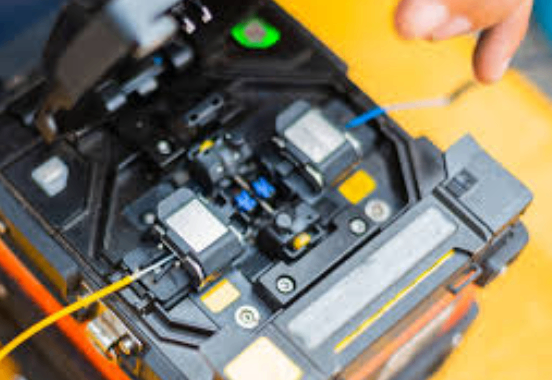Oufu Optical Fiber Cable Co.,Ltd
Address: Shenyang, Liaoning, China
Contact person: Manager Zhang
Phone: 400-964-1314
Mobile phone: +86 13904053308
【whatsapp && wechat】
2024-07-31 1604
Fiber optic splicing is a delicate yet essential process in modern telecommunications infrastructure, ensuring seamless data transmission over vast distances with minimal signal loss. To achieve optimal results, it's crucial to have the right tools and materials at hand. In this article, we'll outline the essential tools and materials you need to efficiently complete fiber optic splicing tasks.

Essential Tools for Fiber Optic Splicing
Fusion Splicer: At the heart of any splicing operation is the fusion splicer. This precision instrument uses heat and pressure to permanently fuse two fiber ends together, creating a virtually invisible joint. Choose a model that meets your specific needs, such as core alignment or clad alignment, and ensure it's calibrated regularly for accurate splicing.
Fiber Optic Stripper: Before splicing can begin, the protective jacket and buffer coating of the fiber optic cable must be removed. A fiber optic stripper is designed to do this without damaging the delicate fiber core. Choose a stripper that's compatible with the type of cable you're working with.
Fiber Optic Cleaver: A precision fiber cleaver is used to create clean, perpendicular cuts on the exposed fiber ends. These cuts are crucial for achieving a strong, low-loss splice. Ensure your cleaver is sharp and maintained properly for optimal performance.
Fiber Optic Cleaner and Lint-Free Wipes: To avoid contamination during splicing, it's essential to keep the fiber ends clean. Use a fiber optic cleaner and lint-free wipes to remove any dust, debris, or residue from the fiber surfaces.
Inspection Tools: Microscopes or fiber inspection probes allow you to examine the fiber ends before and after splicing, ensuring they're free from imperfections and properly aligned.
www.adsscable.cn
Heat Shrink Tubing and Crimp Tool: Once the splice is made, protective heat shrink tubing is applied to reinforce the joint and protect it from environmental factors. A crimp tool is used to secure the tubing in place.
Materials Checklist
Fiber Optic Cable: Ensure you have the correct type and length of fiber optic cable for your project.
Heat Shrink Tubing: Choose tubing that's compatible with your fiber type and splicing method, and has the appropriate shrink ratio and wall thickness.
Isopropyl Alcohol: Used for cleaning fiber ends and splicing tools.
Cable Ties and Markers: For organizing and identifying cables during and after splicing.
Safety Equipment: Always wear protective eyewear and gloves when working with fiber optic cables and tools.
Conclusion
Having the right tools and materials is essential for efficiently completing fiber optic splicing tasks. By investing in high-quality equipment and following best practices for cleaning, cutting, and splicing, you can ensure that your fiber optic connections are strong, reliable, and low-loss. With this checklist in hand, you'll be well-equipped to tackle any fiber splicing project with confidence.